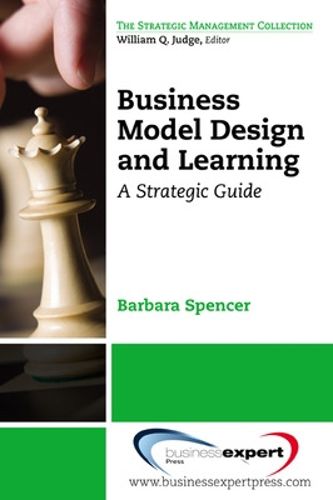Readings Newsletter
Become a Readings Member to make your shopping experience even easier.
Sign in or sign up for free!
You’re not far away from qualifying for FREE standard shipping within Australia
You’ve qualified for FREE standard shipping within Australia
The cart is loading…






This title is printed to order. This book may have been self-published. If so, we cannot guarantee the quality of the content. In the main most books will have gone through the editing process however some may not. We therefore suggest that you be aware of this before ordering this book. If in doubt check either the author or publisher’s details as we are unable to accept any returns unless they are faulty. Please contact us if you have any questions.
This book is aimed at aspiring entrepreneurs and practicing managers who want to create, identify, or articulate business models that will serve as the foundation for success for their businesses, as well as refine and even re-invent those models. It is based on the premise that the fundamental purpose of any business model is to create, deliver, and capture value. More specifically, business models describe the value proposition to the customer, the system that must be in place to create that value, and the logics needed to capture a reasonable share of that value for the firm. In addition, business models are viewed as boundary spanning entities that interact over time to transform industries. To explore and illustrate these ideas, business models are compared to maps, hypotheses, recipes, designs, stories, and agreements. Business examples will be used to anchor each chapter and perspective. The book will proceed as follows. First, the basic definition of a business model will be developed by drawing on and distilling key ideas from published research. It will be argued that the heart of the model is a value exchange agreement between the organization and the customer. To sustain this exchange, both parties must be able to extract their desired value, whether economic or social or both. Next, an illustrated business model framework will be provided and its components will be discussed. Third, a set of business model types will be explored and it will be shown how these models can interact to re-shape industries.
As the book proceeds, the five ways of looking at business models will be explored with emphasis on the ways that adopting each perspective can stimulate entrepreneurs and managers to understand or create their business model, increase its performance potential, re-invent it, or develop a strategy to support it. The way that business models shape industry change will be explored from each perspective. Key considerations and questions to be asked by business leaders in formulating or assessing their business model will be provided.
$9.00 standard shipping within Australia
FREE standard shipping within Australia for orders over $100.00
Express & International shipping calculated at checkout
This title is printed to order. This book may have been self-published. If so, we cannot guarantee the quality of the content. In the main most books will have gone through the editing process however some may not. We therefore suggest that you be aware of this before ordering this book. If in doubt check either the author or publisher’s details as we are unable to accept any returns unless they are faulty. Please contact us if you have any questions.
This book is aimed at aspiring entrepreneurs and practicing managers who want to create, identify, or articulate business models that will serve as the foundation for success for their businesses, as well as refine and even re-invent those models. It is based on the premise that the fundamental purpose of any business model is to create, deliver, and capture value. More specifically, business models describe the value proposition to the customer, the system that must be in place to create that value, and the logics needed to capture a reasonable share of that value for the firm. In addition, business models are viewed as boundary spanning entities that interact over time to transform industries. To explore and illustrate these ideas, business models are compared to maps, hypotheses, recipes, designs, stories, and agreements. Business examples will be used to anchor each chapter and perspective. The book will proceed as follows. First, the basic definition of a business model will be developed by drawing on and distilling key ideas from published research. It will be argued that the heart of the model is a value exchange agreement between the organization and the customer. To sustain this exchange, both parties must be able to extract their desired value, whether economic or social or both. Next, an illustrated business model framework will be provided and its components will be discussed. Third, a set of business model types will be explored and it will be shown how these models can interact to re-shape industries.
As the book proceeds, the five ways of looking at business models will be explored with emphasis on the ways that adopting each perspective can stimulate entrepreneurs and managers to understand or create their business model, increase its performance potential, re-invent it, or develop a strategy to support it. The way that business models shape industry change will be explored from each perspective. Key considerations and questions to be asked by business leaders in formulating or assessing their business model will be provided.